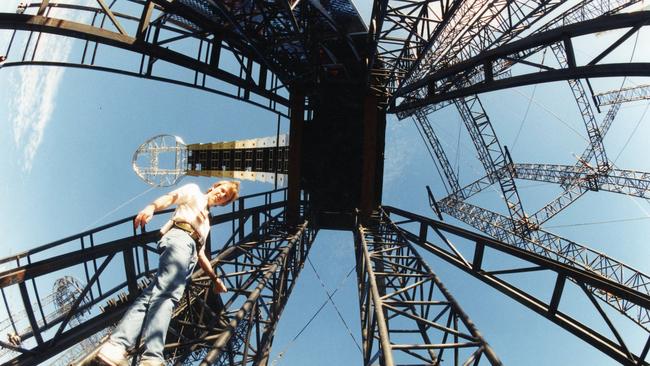It took a Royal Commission to let the SANFL flick the switch to 30 years of great night events at Football Park
FOOTBALL Park’s lights were turned on in 1984 - after years of delay that led to a Royal Commission - to give SA sport its biggest night venue for 30 years. As the four towers come down, we reflect on some of the biggest moments there under lights.
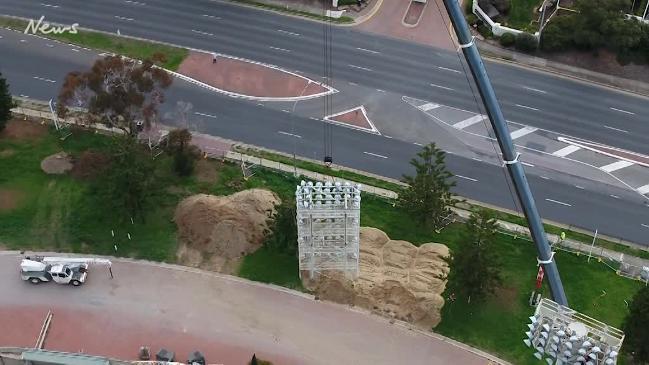
- Major demolition begins at Footy Park
- Opinion: Fitting end to footy’s temple of torment
- First stage of development nearly complete
- Rucci: Exit from Football Park a solemn affair
FOR 25 years - as Football Park’s groundstaff piled up the grass clippings at the eastern end of Max Basheer Reserve - there was the reminder of how tough it was to turn on the lights at the modern home of SA football.
Under the Sheoak trees, behind the first Crows “Shed”, were four 15-metre cylinders. Each was the original base for the four light towers designed for Football Park in the late 1970s as Kerry Packer sought to light up West Lakes and the SCG for his World Series Cricket circus.
WHAT WAS YOUR FAVOURITE MEMORY UNDER LIGHTS AT FOOTY PARK? TELL US BELOW
Remarkably, Packer flicked the switch at the SCG in 1978 - and the SANFL was forced to a Royal Commission in 1979 (after Packer and establishment cricket ended their two-year stoush) and into five years of negotiation to see the light at West Lakes.
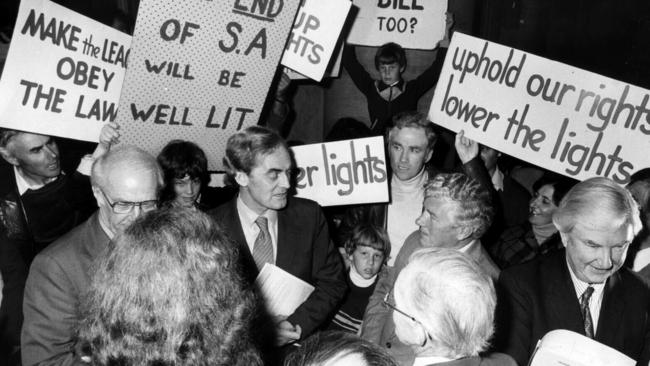
“We were caught in a game of political football,” recalls former SANFL chief executive Leigh Whicker, the man who endured the battle with West Lakes residents and the local developer to floodlight Football Park.
“We were in the middle of a new residential development … and there was still a lot of real estate to sell. We were that time’s version of the LeCornu saga at North Adelaide.”
The compromise demanded 15 metres be taken off each of the original 70-metre light towers that were capped with an eight-metre cage filled with lightbulbs. There was a 10.30pm curfew and a limit to how often the lights were to be switched on. And South Australians learned a new three-letter word - “lux” - as so many television experts told the Royal Commission hearing how bright the lights needed to be to allow for clear telecasts of night sporting events.
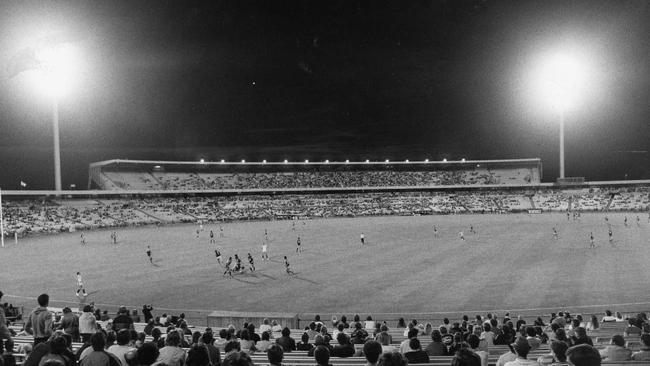
Finally, on March 2, 1984, the SANFL flicked the switch with an Escort Cup double-header starting with Woodville and West Torrens followed by Glenelg beating South Adelaide. The night SA sport came out of the darkness also marked Glenelg great Peter Carey’s 300th senior game.
But the moment that emphasised - as the Americans had noted many years earlier while Adelaide sampled night events at Norwood and Thebarton ovals - the power of night sport was on May 15, 1984. There were 52,719 crammed onto the terraces - some who had pulled down cyclone fences on the eastern side of Football Park - to seen the first-ever SA-Victoria State game played under light.
SA lost, despite Glenelg forward Stephen Kernahan kicking 10 goals - and there was no way the lights were ever going out again.
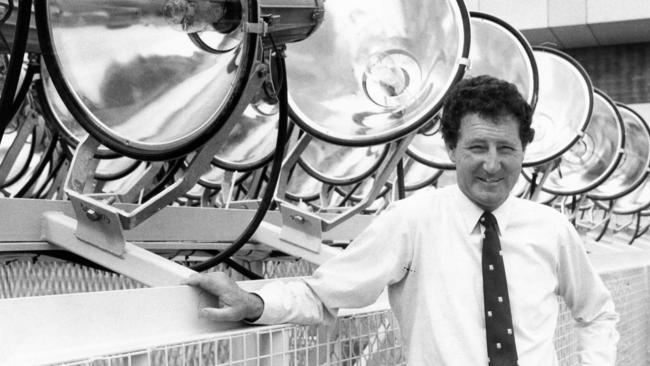
World football followed the bright lights with the Socceroos playing European and South American soccer giants such as Juventus in 1984 - and, infamously, Italian club Udinese in 1985 when local referee Donald Campbell was accused of blowing the final whistle early as the time clock on the Football Park scoreboard showed 43 rather than 45 minutes.
Day-night cricket - the original spur for night sport at Football Park by Packer’s whim - did finally unfold at West Lakes with the one-day McDonald’s Cup State series in 1986. SA, the eventual winner of the tournament, played Queensland and Tasmania in the only first-class cricket matches at Football Park where the World Series drop-in pitches had been maintained for more than a decade.
This was despite the SANFL resisting the temptation to hit the SA Cricket Association for all its woes at Adelaide Oval where North Adelaide residents resisted floodlighting until 1997 - and retractable light towers failed.
“We accepted Adelaide Oval was the home of cricket; it was not for us to pursue cricket games at Football Park,” Whicker said.
Australian football, world football, concerts with some of the biggest acts on the world stage such as Dire Straits … but not cricket.
The light towers and lights were built locally, at the Philips factory at the end of West Lakes Boulevard at Hendon. There was the Escort Cup game - in 1985 when Glenelg beat Sturt - when the lights went out early in the first quarter.
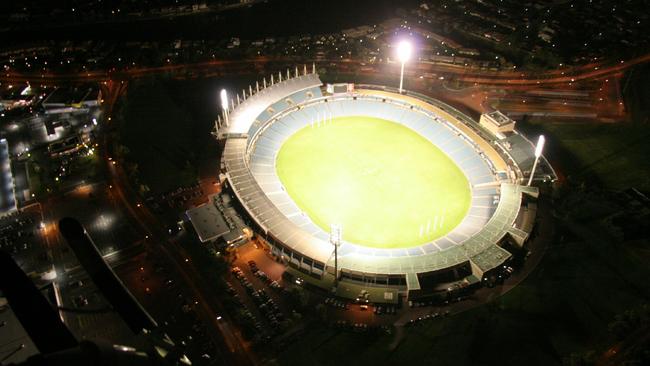
“If you had a power outage,” Whicker recalls, “you had to wait for 20 minutes after supply was restored for those lights to come back on. It only happened once …
“We had just one supply source from ETSA in those days. We finished with two lines of supply - and back-up generators. The generators would not have powered up the lights, but they would have made sure we did not have the stadium fall into darkness and be unsafe.”
The light towers that were such a fixture of the western Adelaide skyline started to come down on Tuesday as part of the redevelopment of the Football Park precinct. It is five years since they were last used for an AFL game - the Port Adelaide-Carlton twilight match on August 31, 2013. There have been Foxtel Cup games for state league teams, under-18 championship matches and Crows training - and now darkness.
And it is still staggering to reflect on how a Royal Commission was needed to shine the light on Football Park.
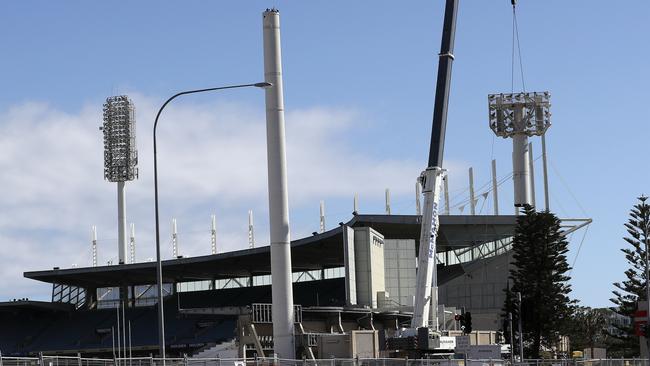
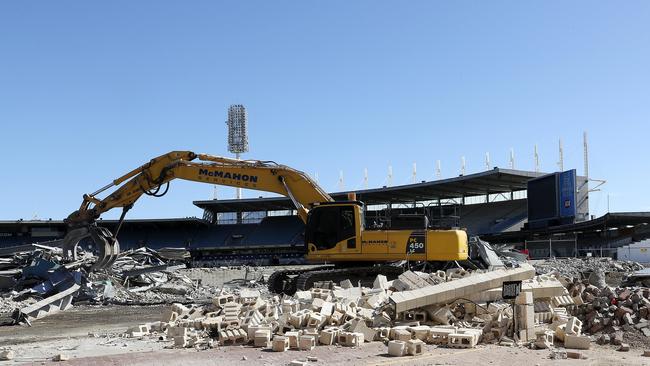
RUCCI’S BIG MOMENTS UNDER THE LIGHTS
SOCCEROOS v UDINESE
June 5, 1985
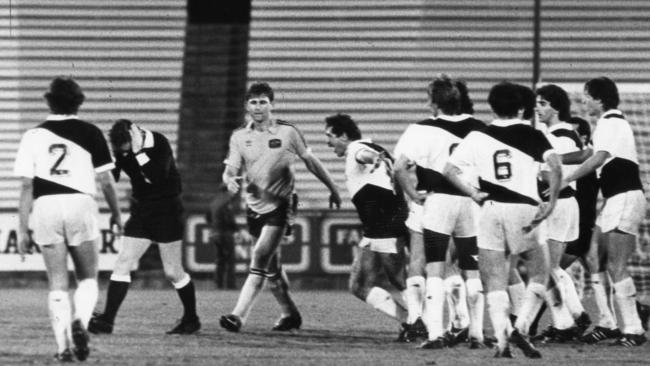
FOOTBALL Park operated with a 10.30pm curfew to appease the West Lakes residents. When the Socceroos played Italian club Udinese in the second year of night events at Football Park, was local referee Donald Campbell working to the curfew or a 45-minute second half as the Socceroos led Udinese 2-1. Campbell called time - and was surrounded by protesting Udinese footballers - insisting his time piece was accurate while the original Football Park electronic scoreboard was showing less than 45 minutes on its time clock.
Campbell said after the match that they weren’t too happy with him and accused him of cutting the second half short. He said when the Italian players surrounded him there was a bit of pushing and shoving which resulted in him being hit in the head.
MCDONALD’S CUP CRICKET
October 18-19, 1986
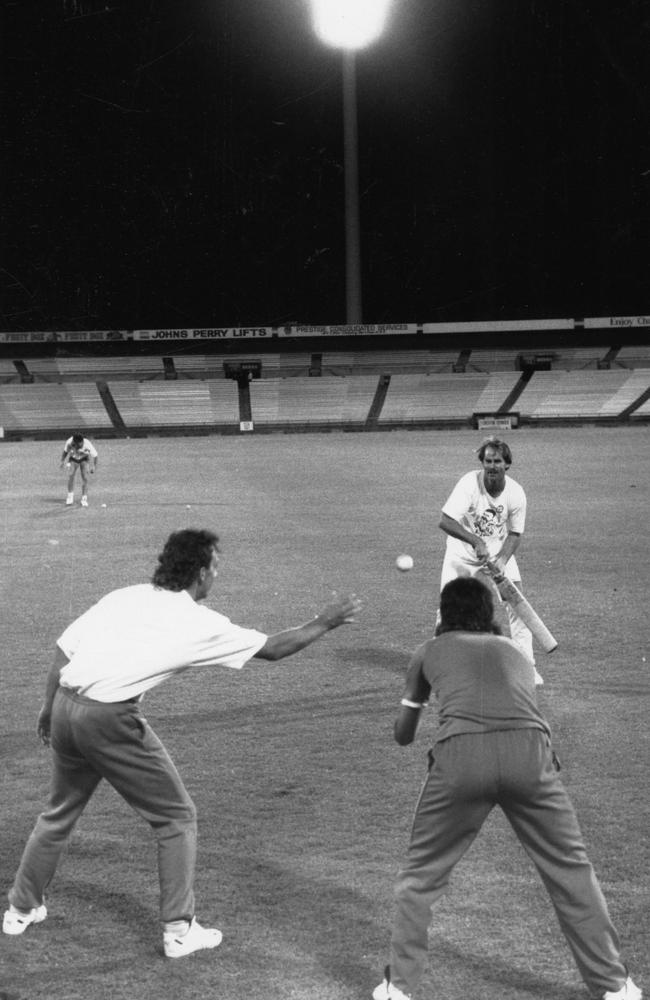
ALMOST after a decade after Kerry Packer wanted to light up Football Park for World Series Cricket, the flannelled men of establishment cricket arrived at West Lakes with colour shirts for two first-class one-day games with David Hookes leading SA to the McDonald’s Cup title. The first game against Queensland was rain-affected in both innings. The second against Tasmania is remembered for Andrew Hilditch being run out on 109.
LEIGH COLBERT’S NON-MARK
September 13, 1997
FOOTBALL Park hosted its first AFL final under lights with fourth-ranked Adelaide hosting second-placed Geelong in a semi-final that exposed the flaws in the AFL’s original top-eight system - and is remember for Cats forward Leigh Colbert not being paid a sensational mark on the end of Glen Kilpatrick’s long kick in the third term.
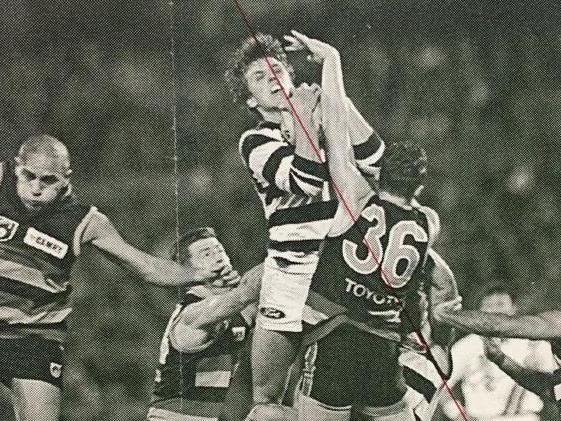
Channel Seven commentator Gerard Healy said: “That’s one of the best marks we’ve seen for the season”. Field umpire Grant Vernon did not pay it, calling for a field bounce instead. The Crows won the final by eight points.
GEHRIG’S 100TH GOAL, WANGANEEN’S GOLDEN GOAL
September 17, 2004
PORT ADELAIDE was again choking as Football Park hosted its first AFL preliminary final under lights in 2004. With Power midfield Roger James being the only player having an influence, St Kilda rushed to a 14-point lead on key forward Fraser Gehrig kicking his 100th goal of the season. The fans running onto the field gave the Power a much-needed “time-out” to resolve the scoreboard crisis. The match remains an Australian football classic with Brownlow Medallist and inaugural Power captain Gavin Wanganeen scoring the winning goal from 45 metres on the boundary in the north-east pocket.
RAMSGATE SHOWDOWN
April 27, 2002

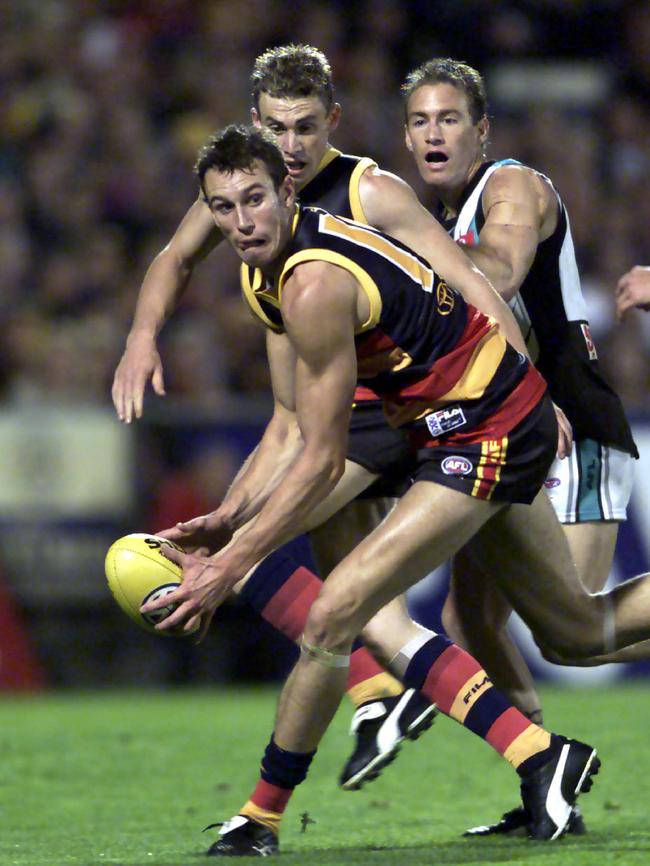
IT was the first Showdown played under lights - a Saturday night derby between Port Adelaide and the Crows that had a Sunday sequel that added to the Showdown legend. The game itself is a great contest with Port Adelaide winning by eight points - the sixth of the first 11 derbies that was decided by less than two goals. But the real rumble followed the day after as both teams collided at the Ramsgate Hotel at Henley where as many as 10 players - most notably on-field rivals Mark Ricciuto and Showdown specialist Josh Carr - became involved in a much-debated scuffle.
BONE’S FIVE MEMORABLE FOOTY PARK MOMENTS AT NIGHT
AS former Glenelg and inaugural Adelaide Crows captain, Advertiser AFL expert Chris McDermott has had a personal involvement in many of Footy Park’s memorable moments. Here are some of his favourites (not including ELO’s Out of the Blue Tour in 1978).
ESCORT CUP, FIRST-EVER NIGHT GAME
March 2, 1984
It was the first night game at Football Park, and even though it was a preseason game, it was a step up from night games at The Parade, where many previous SANFL matches under lights had been held.
My Glenelg side was up against South Adelaide. Graham Campbell, coach of the Tigers, against Graham Cornes, coach of the Panthers, in what was Glenelg champion Peter Carey’s 300th game.
The preseason clash featured those infamous slippery bright yellow footballs that where near impossible to pick up in perfect conditions let alone in the wet.
The South Adelaide line up featured veteran Ron Hateley, the brilliant Mark Naley, John Schneebichler, Glynn Hewitt and one of the toughest men in the game in that era,
Robyn White.
Peter Carey aside, the Tigers boasted Stephen Kernahan and Tony McGuinness, a young livewire called Tony Hall, the mercurial Ross Gibbs, the one and only Tony Symonds, the human wrecking ball Scott Salisbury (who provided his own moment in the final of the preseason competition in 1990 when his elbow met with Woodville’s Richard Champion’s face and earned him a seven-week holiday) and not to forget old 27 Gavan Walsh,
Watch the quality of the game. The fierce attack on ball and body.
The quick, no-fuss movement of the ball and the slick decision making of the umpires.
Congestion was not a problem.
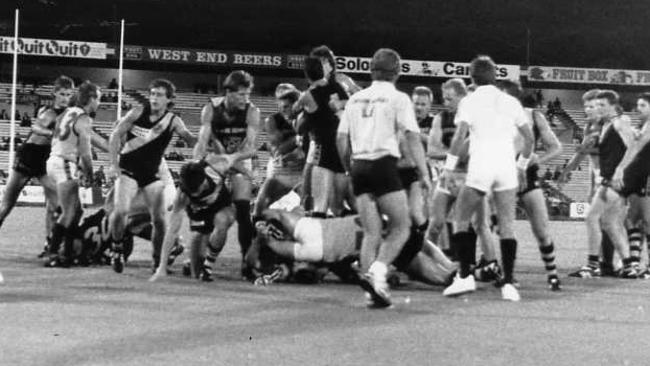
LIGHTS GO OUT MID-MATCH
Escort Cup, 1985
Twelve months after the first game under lights at Football Park, Glenelg would return to the scene to take on Sturt in the 1985 Escort Cup.
It was a game that quickly developed into chaos.
Glenelg came out for their pre-match warm-up only for the lights to go out and force them off the field for a brief period while repairs were made.
The game finally got underway with Jimmy Derrington kicking the first goal for the Double Blues before the lights went out again less than a minute into the match forcing both teams off the ground for over 30 minutes.
The heavens opened and the rain fell heavily during the break in play but many of the fans remained and were finally rewarded with some action with the Tigers going on to win by 28 points.
KG Cunningham was calling the game and did his best to keep his viewers interested in very difficult circumstances.
The problem was ultimately fixed and the lights never went out again until the switch was turned off for good some 30 years later.
FIRST STATE GAME UNDER LIGHTS
May 15, 1984
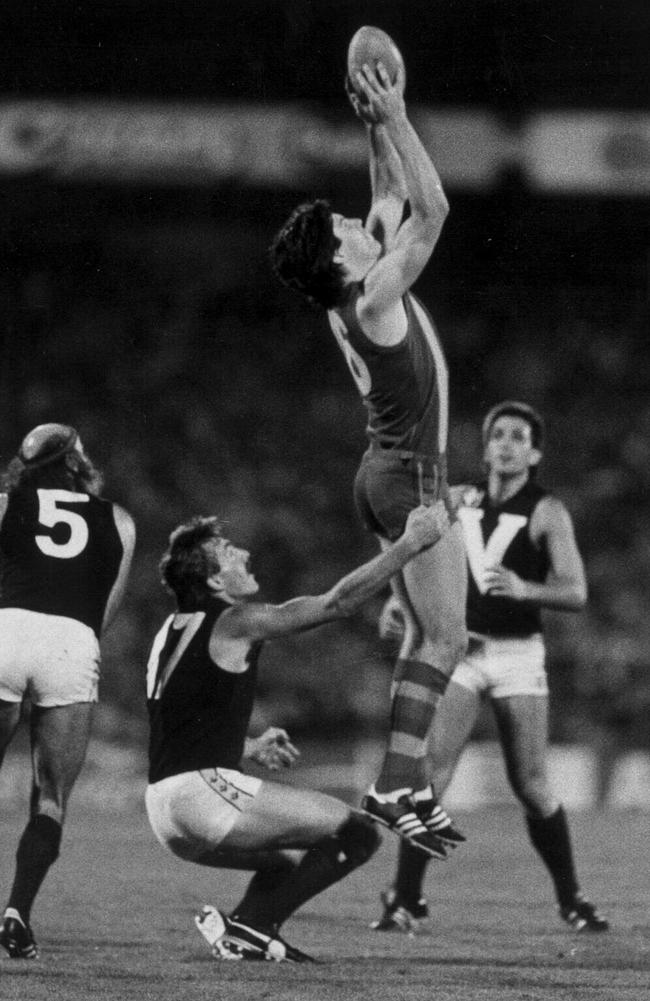
Stephen Kernahan kicks 10 on Gary Pert and Bruce Doull but on a losing side in the first interstate clash between South Australia and Victoria to be played under lights at Football Park.
The game featured an in-form South Aussie line up against a star-studded Victorian team that had won 77 of their previous 101 contests. The South Aussies had won 22 times and two of the games were drawn.
Another big crowd turned up at Football Park on a perfect night to witness one of the greatest state games of all time.
Neil Craig skippered the South Australian team that included emerging superstars Stephen Kernahan, John Platten, Craig Bradley, Greg Anderson, Garry McIntosh and Mark Naley while the Vics had a young Tim Watson, Doug Hawkins, Paul Salmon, Peter Daicos, Wayne Johnston, the great Michael Tuck and many, many more.
The Vics got off to a flying start. Holding the ball decisions were still causing some concern as was bouncing the ball for the field umpires.
Kicking for goal was a constant problem for the South Aussies, except for Kernahan the star of the night, as kicked a 10-bag haul for the one and only time in his 403 game career.
The Vics won by just four points 16.12.108 to 16.8.104.
SA BREAKS DROUGHT AGAINST VICS
May 13, 1986
It doesn't and didn't ever get much better than this famous night in SA football history.

SA finally defeats the all-conquering Victorians by 10 points in another ripper under lights at Football Park in 1986.
Michael Aish skippered the team in front of another sold-out stadium in a brutal contest between these two states.
No surprise to see a young looking Scott Salisbury taking it up to the Vics in his no-fuss win-at-all-costs style.
Platten, Kernahan, McGuinness and co returned home to play a big part in the victory but so too did some not so familiar faces in Craig Williams with his match-saving mark late in the final term and four goals from the mercurial and sometimes controversial Grenville Dietrich.
They were the days.
Football Park packed to the rafters and the game of Australian rules football at its absolute peak.
CROWS’ FIRST OFFICIAL AFL MATCH
March 22, 1991
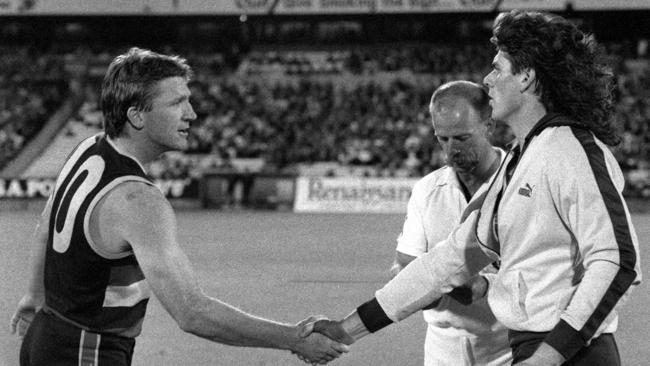

The night the game as we once knew in this state changed forever.
After a pre-season trial game against Essendon attracted 30,000 people, the Crows took to the field in their first game for premiership points against the almighty reigning Premiers, Hawthorn.
Brereton, Dunstall, Platten and Darren Jarman against 22 relative unknowns from the South Australian football community, old and new uniting to cheer their new team to an unforgettable victory.
Romano Negri got the first touch. John Klug the first handball. Simon Tregenza the first kick and believe it or not the second as well.
An unforgettable night in the history of the Adelaide Football Club.
(*Unfortunately, Bone’s memories of the match are hazy because he was knocked out in a collision with Dermott Brereton and Paul Dear early in the last quarter).


NATHAN DAVIES’ FAVOURITE FOOTY PARK CONCERTS
Football Park was more than just a cauldron for sporting contests, it also hosted concerts from some of the biggest names in music, from ABBA to Neil Diamond, The Beach Boys and The Rolling Stones, to Andre Rieu and One Direction. Here are Advertiser music writer Nathan Davies’ top five.
U2, ZOO TV TOUR
November 16, 1993
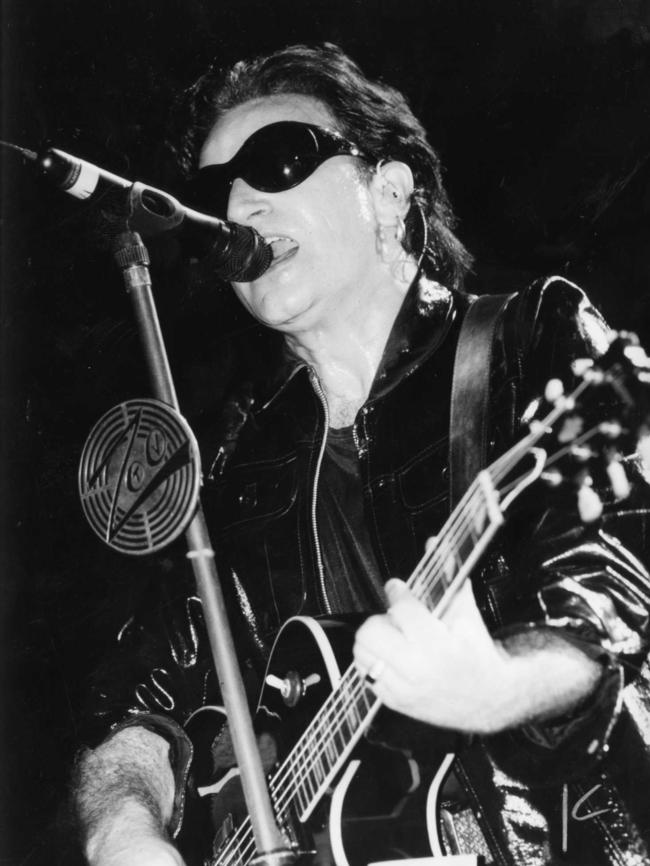
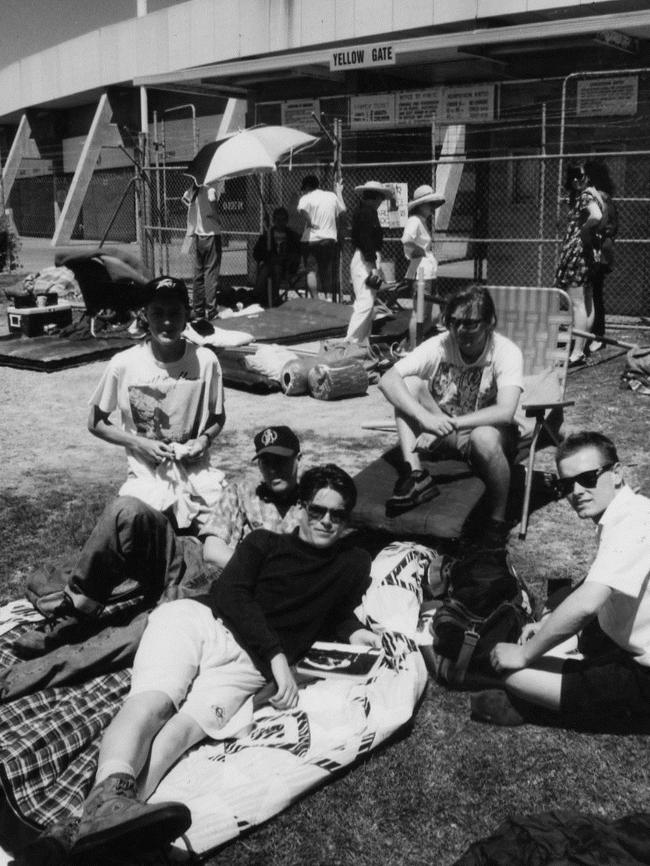
This was U2 reinvented, a band of chameleon shapeshifters making the change from fist-in-air anthems to sleek, sophisticated dance-pop. A packed Footy Park watched Bono and his boys rip through a 22-song set leaning heavily on new records Achtung Baby and Zooropa, but with enough classics mixed in to keep everyone happy.
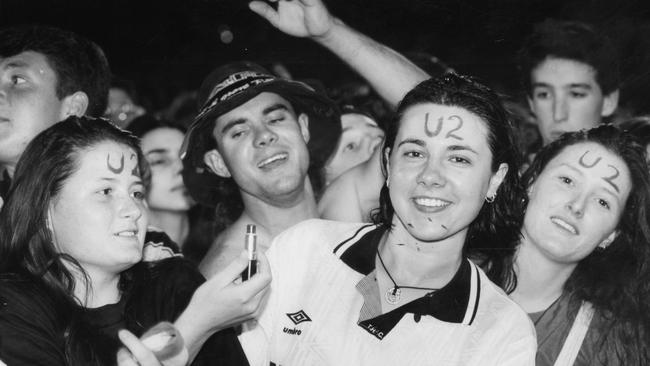
INXS, MODELS, HOODOO GURUS, I’M TALKING, THE BIG SWING TOUR
January 1, 1985
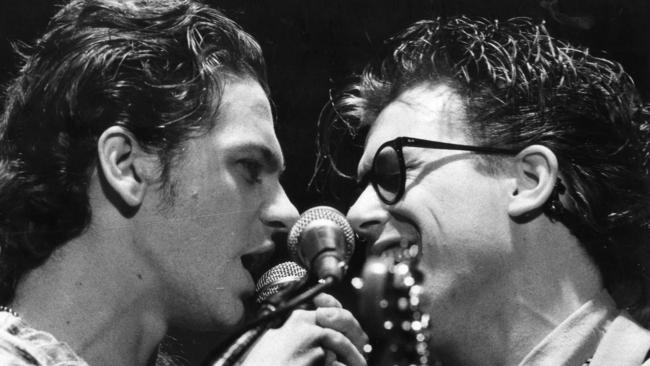
What a way to start the year — watching the biggest bands in Australia at the height of their powers. INXS, fronted by the mercurial Michael Hutchence, had dropped fourth record The Swing — featuring Original Sin and I Send a Message — ensuring this was the hottest ticket in town.
DIRE STRAITS, BROTHERS IN ARMS TOUR
February 12, 1986
It’s hard to over-estimate just how huge this English band was in the mid-eighties, riding high on the success of mega-hit album Brothers in Arms and its smash singles So Far Away, Walk of Life and, or course, Money for Nothing. This concert held the attendance record (55,000) for 20 years, until it was beaten by U2.
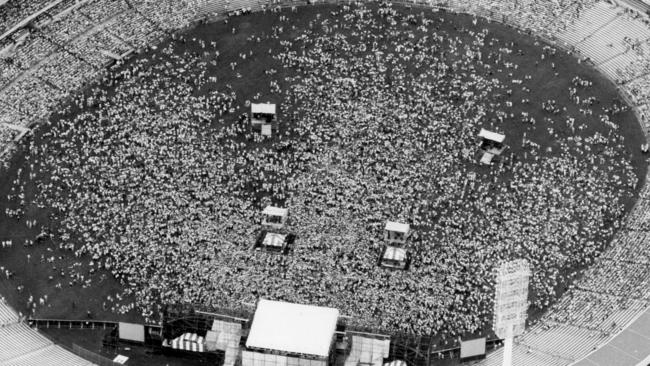
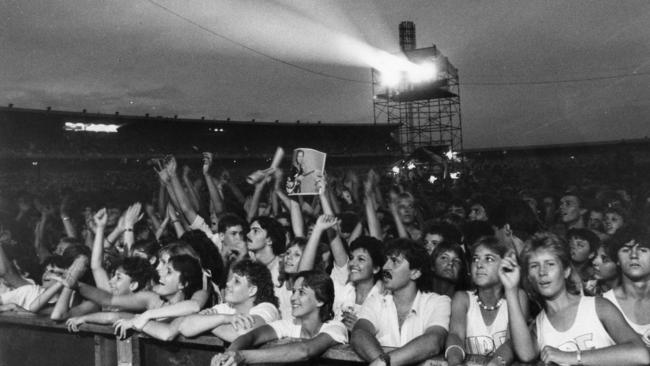
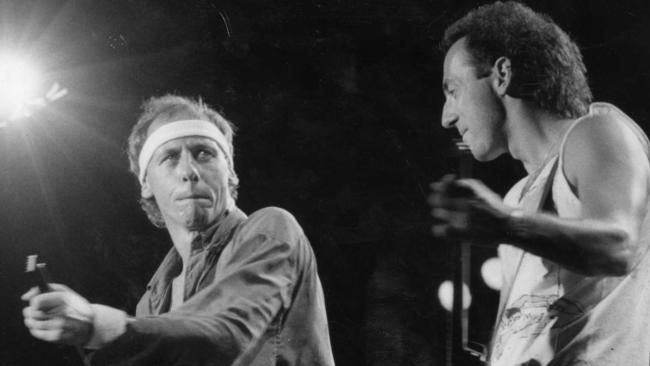
ABBA
March 8, 1977
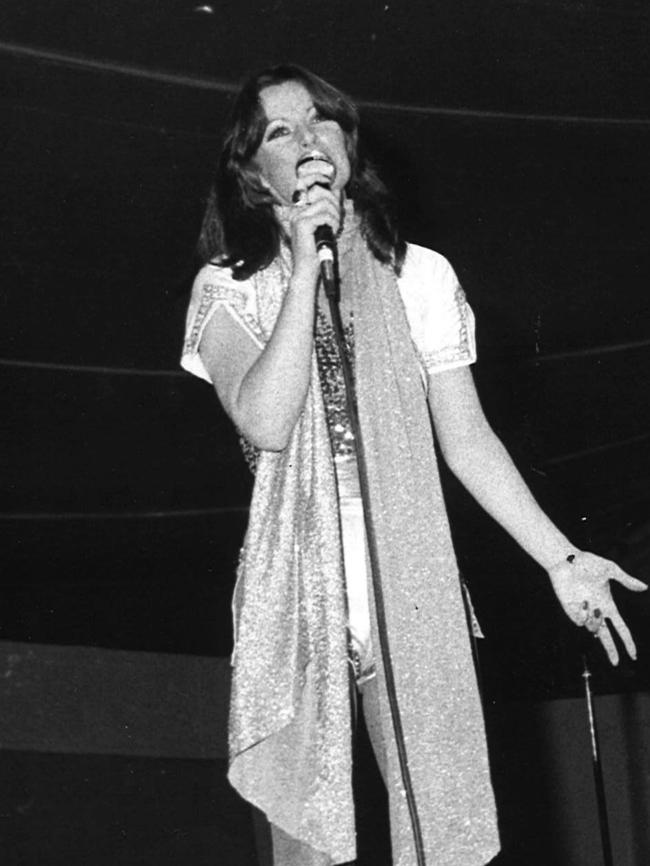
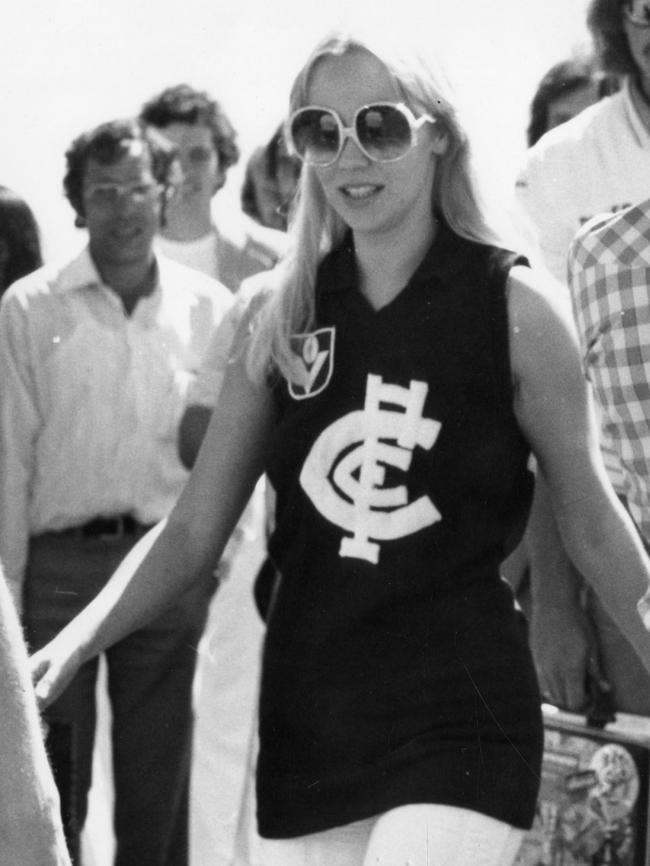
More than 20,000 teens made the trek out to West Lakes just to set eyes on their Swedish idols, with another 10,000 reportedly listening from the car park. The behaviour of the frenzied Australian fans became legendary, and was immortalised in the doco Abba: The Movie, released later that year.
ROLLING STONES, VOODOO LOUNGE TOUR
April 5, 1995
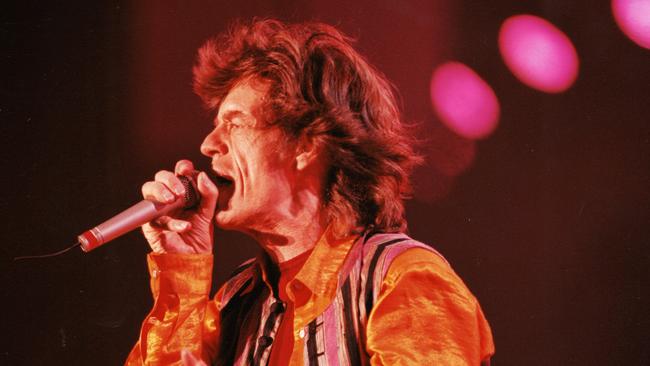
Determined to Not Fade Away, Mick, Keith and the boys showed that, three decades after they started, they still delivered the greatest rock show on earth. The Voodoo Lounge tour attracted almost 30,000 Adelaideans and made the band a cool US$1.88m. The entire tour grossed US$320m, making the most successful tour ever at the time.
